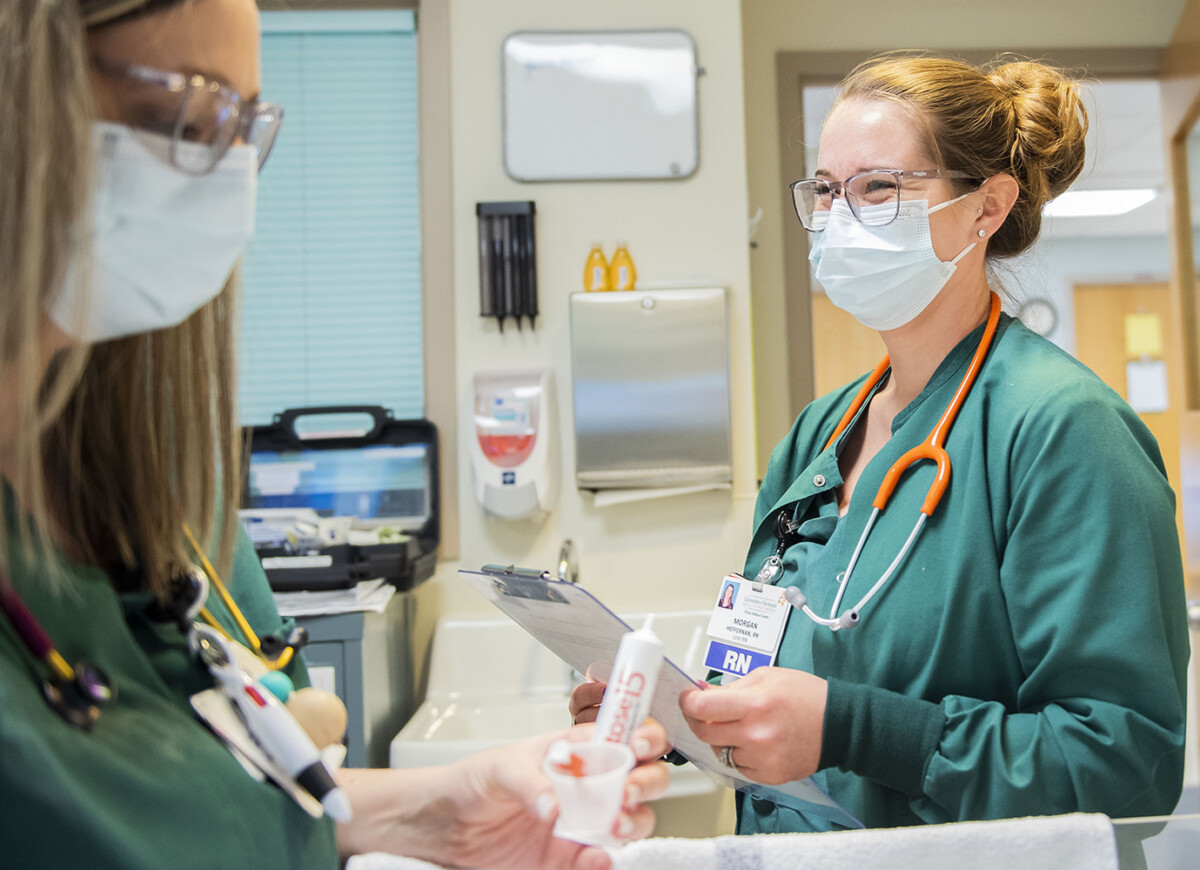Threading the ‘Traveler’ Needle

“Someone called me a purple unicorn this week,” Kelly Evans, MSN, RN, says with a laugh. Evans, director of central resource management at the University of Vermont Health Network, earned this comparison to a mythical and miraculous creature because she and her team are beginning to do what once seemed impossible: reducing the health system’s reliance on temporary clinical staff, often called travelers, without cutting services or losing the valuable contributions such personnel can provide.
That made my day because I’m a nurse – I’ve been with the organization for 23 years – and my goal in this new position is to simplify the traveler process for every health care partner and allow other people, especially my fellow nurses, to do the work they were hired to do.
Kelly Evans
During the pandemic and in its immediate aftermath, when workforce shortages and acute patient demand for medical care made staffing difficult, health care organizations across the country struggled to find a balance with travelers. Employing too many created an unbearable financial burden because the rates for their services rose significantly as a result of widespread need, but employing too few left organizations potentially unable to meet the needs of their community. Many organizations sought to cope with the high cost temporarily and then move aggressively to cut it once the crisis passed. But the demand for health care has remained persistently high even as COVID-19 has relented, leaving little room to dramatically cut temporary staff without limiting services or increasing wait times for patients.
“As important as it is to address the cost of travelers, patients come first and their ability to get the care they need is our primary concern,” says Carrie Howard-Canning, MBA, MSN, RN, the Network’s interim chief nursing officer.
We knew from the beginning of this process that we couldn’t and wouldn’t just cut our use of travelers because that would get in the way of fulfilling that mission.
Carrie Howard-Canning
Instead, Central Resource Management (CRM), the UVM Health Network group formed to solve the traveler puzzle, decided to focus on efficiency and organization – issues that require more subtle strategies than simply offloading temporary staff. Specifically, CRM worked to use the health system’s size and scope to demand better rates and more favorable agreements from the agencies that supply travelers, eliminate competition for talent between partner organizations, standardize and streamline contracting and onboarding for travelers, and centralize traveler planning without disrupting the ability of partner organizations to determine their staffing needs.
The results of their efforts have been promising. Overall rates for travelers are down by 40% to 45% from February 2022, the number of travelers employed has decreased steadily and a robust system is now in place to ensure optimal use of this resource within the Network.
But these positive changes – nuts and bolts financial and logistical improvements that can be calculated with simple arithmetic – are secondary in some ways to the impact that reimagining our approach to travelers has had on patient access to care. Access remains an issue due to the local effects of national workforce shortages and high levels of community need for health care, but it isn’t magnified at the Network by embracing a new model for how travelers are managed.
It’s helped that the UVM Health Network has made recruitment and workforce development strides during the same period. In addition to dedicating more resources to attracting talent, especially clinical talent, and making a concerted effort to convert travelers to full-time employees, training initiatives have begun to build pipelines for in-demand positions. The Surgical Technician Pathway Program, for example, allows participants to earn a full-time salary while receiving on-the-job training and the Licensed Nurse Aide (LNA) Program gives participants the opportunity to make a full-time salary while studying to complete the course and receive licensure through the State of Vermont. Similarly, the Network’s partnership with Vermont State University and the Community College of Vermont to revitalize the state’s only respiratory therapy program shows our commitment to addressing staffing shortages and access issues from as many angles as possible.
The traveler improvements made over the last year are also engineered to benefit full-time staff across the health system. Nurse managers no longer need to handle the complicated administrative work associated with finding and onboarding new travelers, freeing them up more to attend to the responsibilities they were trained to address, and local leaders at partner organizations no longer need to navigate the complicated terrain of traveler procurement, which is now handled by Evans and her team.
The other, often overlooked advantage of adopting a more nuanced approach to nurse travelers is that, unlike some other health systems, the UVM Health Network hasn’t dramatically or suddenly diminished an important source of expertise and new perspectives. “Travelers have worked in a variety of settings across the country and bring their experiences and their ideas with them to our care teams in the Network,” says Howard-Canning.
While there have been significant financial challenges related travelers for our organization, there are also benefits that we need to take advantage of while they’re here to learn how we can do things differently to take care of patients at the absolute highest level here in our area.
Howard-Canning
